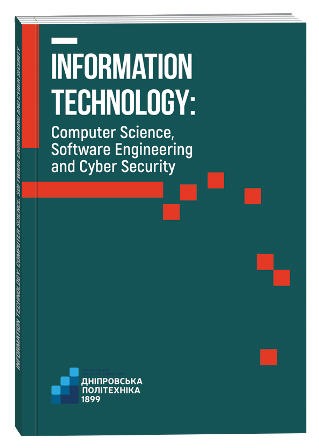ANALYSIS OF METHODS FOR SOLVING THE ISOMORPHISM PROBLEM IN MODELING THE COGNITIVE PROCESS OF RECOGNITION
DOI:
https://doi.org/10.32782/IT/2024-1-9Keywords:
cognitive science, cognitive process, scene graph, isomorphism, WL-test, GIN, graphCL, color refinement.Abstract
The cognitive process of understanding refers to the brain activity responsible for identifying objects, associating them with concepts based on existing knowledge. One of the important tasks in modeling this process is choosing a method for representing visual data regardless of their size, contrast, spatial arrangement, etc. The aim of the work. The aim of the work is to increase the effectiveness of modeling the cognitive process of understanding through the use of graph data to represent visual information. With the help of graph structures, it is possible to present the semantic information of the visual data of the comprehension process in the form of a scene graph, and the process itself can be represented as a search for analogies among the scenes of the graph using the solution of the isomorphism problem. The methodology. The concept of graph isomorphism implies that two graphs are considered identical if there is similarity in the relationships between their vertices and edges. Modern methods for addressing this concept include the WL-Test, graph neural networks GIN, and the graph contrastive learning algorithm graphCL. During the analysis, the main attention was paid to the ability of methods to preserve semantic information during the transformation of graph data, as well as their time estimation when working with large graphs, which are more common in data representation of the cognitive understanding process. The scientific novelty. An approach to modeling the cognitive process of understanding by solving the problem of isomorphism on graph structures is proposed. Current research does not provide a single opinion about which methods to use for visual data presentation when modeling the process of understanding. The main drawback of the works that present models of image understanding is the lack of explicit representation of data, which does not allow to track and analyze the system in the event of a failure. The conclusions. The research results revealed the effectiveness of the graphCL method for use in modeling the understanding process. The effectiveness lies in the fact that the augmentations used in the method allow preserving the semantic information of graph data, which is a key factor for modeling accuracy.
References
A layered reference model of the brain (LRMB) / Yingxu Wang et al. IEEE transactions on systems, man and cybernetics, part C (applications and reviews). 2006. Vol. 36, no. 2. P. 124–133.
Image retrieval using scene graphs / J. Johnson et al. 2015 IEEE conference on computer vision and pattern recognition (CVPR), Boston, MA, USA, 7–12 June 2015. 2015.
A cognitive system for understanding human manipulation actions / Y. Yang et al. Advances in cognitive systems 3. 2014. Vol. 2. P. 67–86.
Generating semantically precise scene graphs from textual descriptions for improved image retrieval / S. Schuster et al. Proceedings of the fourth workshop on vision and language, Lisbon, Portugal. Stroudsburg, PA, USA, 2015.
Zitnick C. L., Parikh D. Bringing semantics into focus using visual abstraction. 2013 IEEE conference on computer vision and pattern recognition (CVPR), Portland, OR, USA, 23–28 June 2013. 2013.
Are you talking to a machine? Dataset and methods for multilingual image question answering / H. Gao et al. Advances in neural information processing systems 28 : 29th Annual Conference on Neural Information Processing Systems 2015, Montreal, 7–12 December 2015. 2015. P. 2296–2304.
Grohe M., Neuen D. Recent advances on the graph isomorphism problem. Surveys in combinatorics 2021. 2021. P. 187–234.
Weisfeiler B., Leman A. A reduction of a graph to a canonical form and an algebra arising during this reduction. Nti. 1968. Vol. 2, no. 9. P. 12–16.
Huang N. T., Villar S. A short tutorial on the weisfeiler-lehman test and its variants. ICASSP 2021 – 2021 IEEE international conference on acoustics, speech and signal processing (ICASSP), Toronto, ON, Canada, 6–11 June 2021. 2021.
Graph neural networks: a review of methods and applications / J. Zhou et al. AI open. 2020. Vol. 1. P. 57–81.
How powerful are graph neural networks? / K. Xu et al. ICLR 2019 : International Conference on Learning Representations, New Orleans, 6–9 May 2019. 2019. P. 1–17.
Graph contrastive learning with augmentations / Y. You et al. Advances in neural information processing systems. 2020. Vol. 33. P. 5812–5823.
Adversarial attacks on graph neural networks / D. Zügner et al. ACM transactions on knowledge discovery from data. 2020. Vol. 14, no. 5. P. 1–31.







